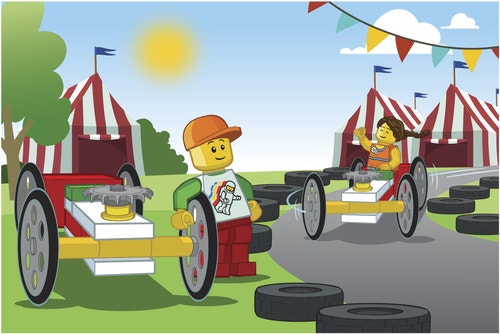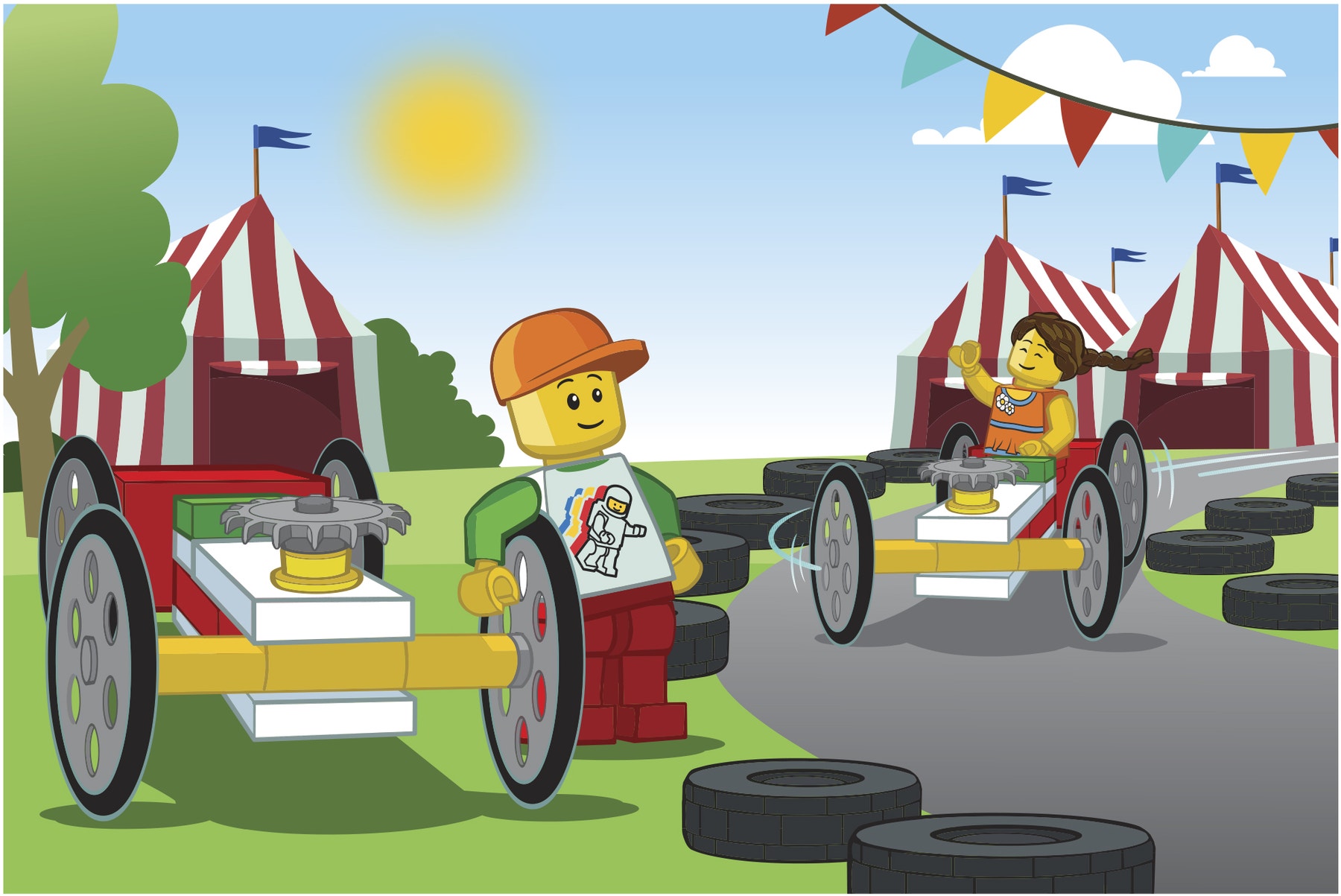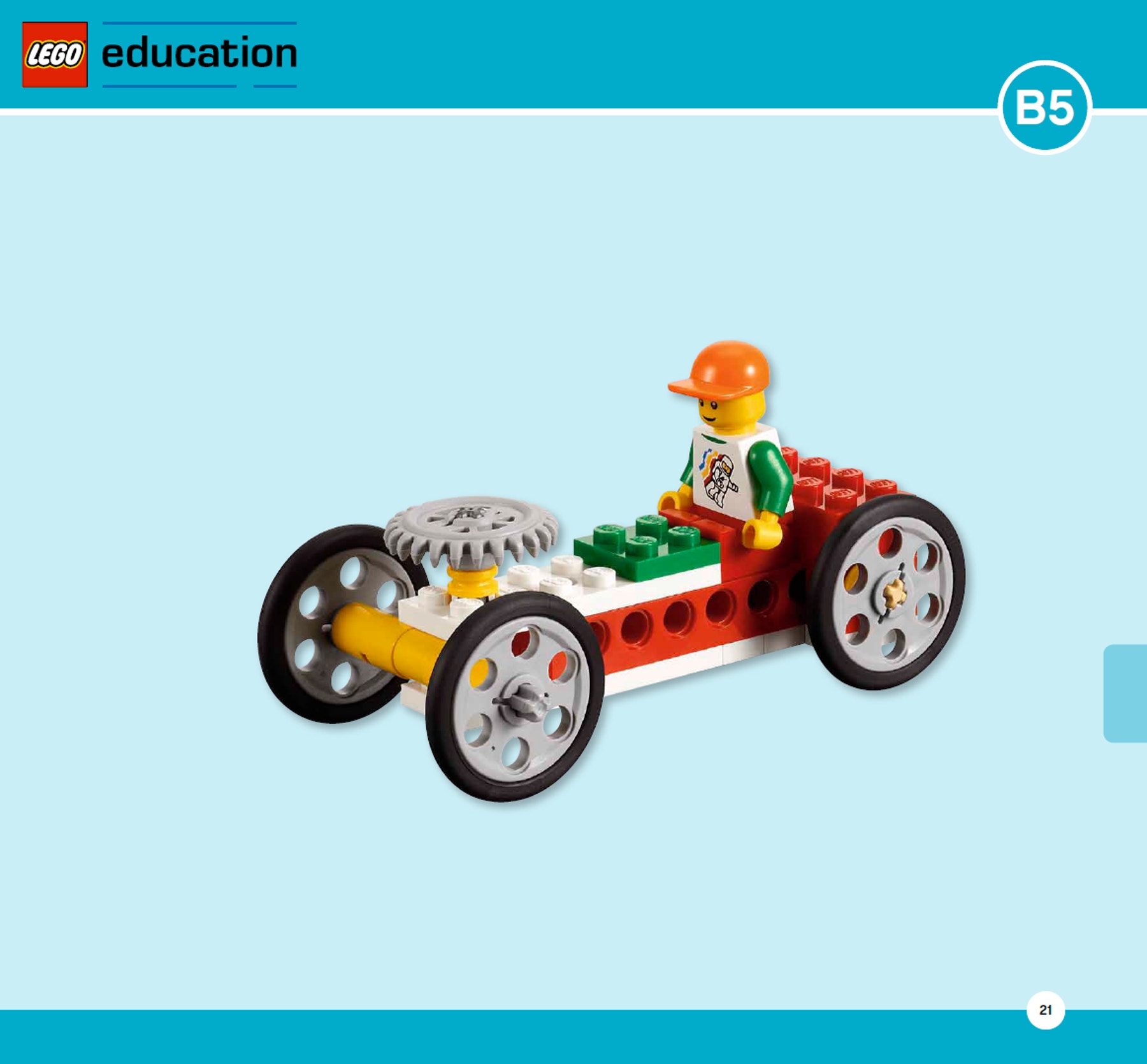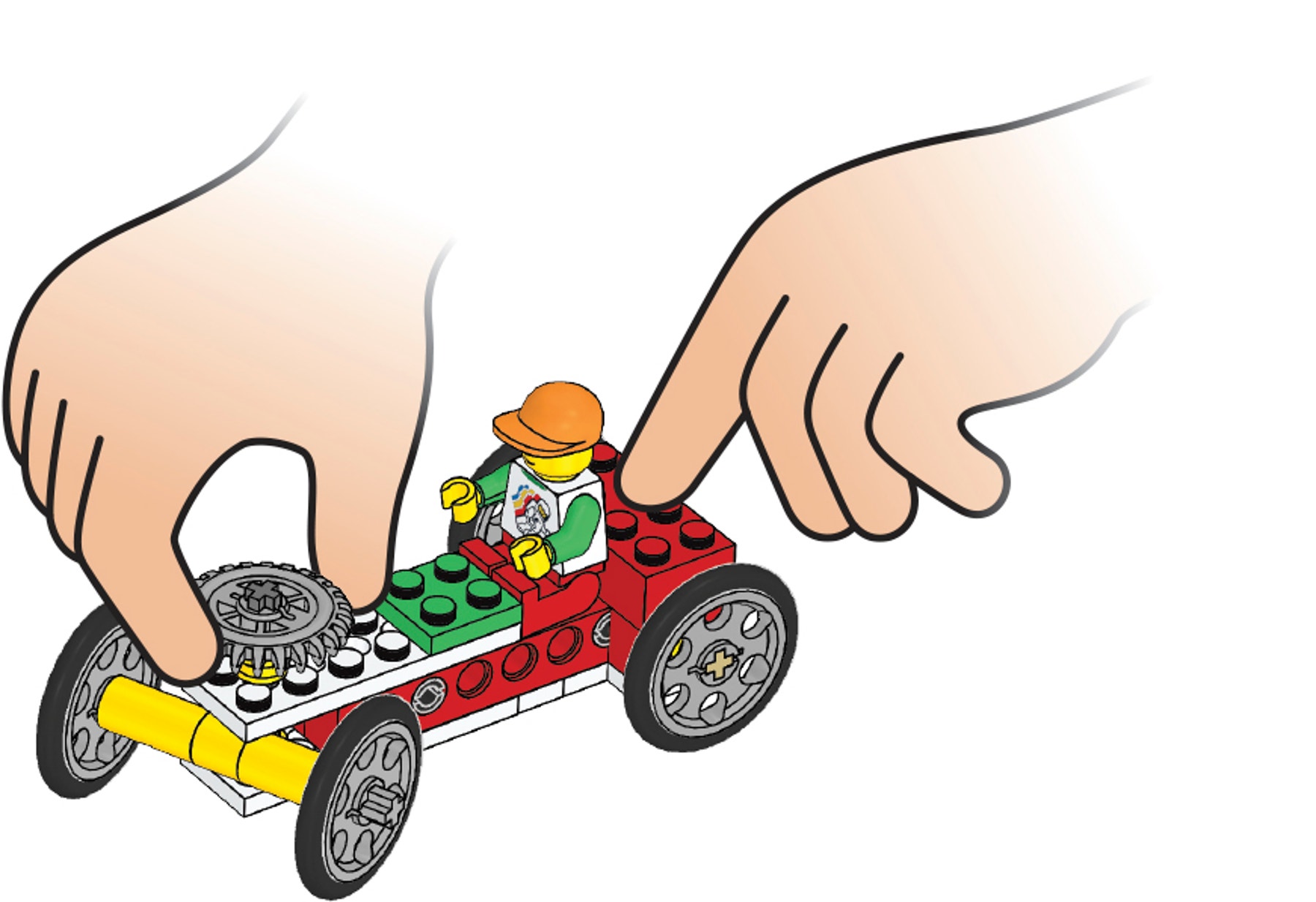Go-Cart
Identify a wheel and axle as a simple machine and where friction might be found.

Connect
(5-10 Minutes)
Sam and Sally love going to the fair. They enjoy racing on the go-cart track. It’s also fun just to drive around, waving to their friends and families, but they have to keep a careful eye on the track – not all go-carts are that easy to steer.
Have you tried steering a go-cart?
What do you enjoy most about go-carts?
Which simple machine is needed for a go-cart to move and turn?
Let’s build a go-cart!

Construct
(10-15 Minutes)
1. First, build Go-Cart Model B5 and steer it around.
Follow Building Instructions B, pages 22 to 30, steps 1 to 13.
When Go-Cart Model B5 has been built, check the following:
If necessary, learners should be made aware of how friction (see 'Glossary’
section) can affect movement. If the wheels are pushed in too far towards the
body of the model they cannot turn freely.
Make sure Sam or Sally is attached securely.

Hint
When testing the go-cart, use both hands to keep all four wheels on the track. Place one hand on the back of the cart and the other on the steering wheel.

Contemplate
(10-15 minutes)
2. Mark which type of axle is used for the front set of wheels.

Model B5 uses a single, fixed axle.
3. Then look carefully at the pictures of the models and compare Go-Cart Model B5 to Go-Cart Model B6.
Circle what is different.
What do you notice? Explain how the models are different.
Students should notice the difference in the axles used for the front set of wheels. Model B5 uses a single axle, while model B6 uses separate axles.
4. Next, look carefully at the pictures of the models and make a prediction.
If I compare model B5 to model B6, then I think that Go-Cart Model (B5/B6) will be the easier to steer.
Encourage students to discuss the effects the different axles will have on the go-carts in their own words. For the prediction, the correct answer is model B6; however, it does not matter whether students get the answer right or wrong at this point, only that they should make a prediction that can be checked later.
5. Test Go-Cart Model B5.
Students observe and test the degree of ease with which they can steer the model in a straight line and around a sharp corner. Encourage them to try more than once to ensure that their observations are correct.
The students will notice that Go-Cart Model B5 is very easy to steer when driving in a straight line. However, they will also notice that it is hard to steer through sharp turns or in a zigzag pattern, as the wheels cannot turn at different speeds. One wheel will always skid when turning corners. Students must write their answers in the chart.
Note
If possible, keep an example of Go-Cart Model B5 for students to compare with Go-Cart Model B6.
6. Build Go-Cart Model B6 and steer it around.
Follow Building Instructions B, pages 32 to 40, steps 1 to 13.
Encourage students to identify parts while they are trying out the model.

7. Test Go-Cart Model B6.
Students observe and test the degree of ease with which they can steer the model in a straight line and around a sharp corner. Encourage them to try more than once to ensure that their observations are correct.
The students will notice that Go-Cart Model B6 is very easy to steer, both when driving in a straight line and when following zigzag patterns involving sharp turns. The separate axles allow the wheels to turn at different speeds. Students must write their answers in the chart.
8. Finally, draw a conclusion and check your prediction.
Go-Cart Model B6 turns more easily because of the use of separate axles.
Continue
(10-15 Minutes)
Students are asked to build a test track and to explore the movements of the go-carts. Student are also encouraged to rebuild the go-cart by, for example, exploring the effect of using separate axles for the back set of wheels, or by using different wheels. They must write down their observations.
Note
There are no building instructions included to guide students through the Continue phase.
Encourage students to discuss the effects the different wheels and axles will have on the go-carts in their own words, prompting them with questions such as:
- Describe what happened when you tried steering the go-cart.
- How easy/difficult was it to steer around the test track? Why do you think that was?
- Describe how the model works.
- What did you do to make sure your observations were correct?
- It is suggested that students should draw different items where they find wheels and axles used in everyday machines and mechanisms.
Optional
With more advanced students, you might consider introducing wheels as rollers or exploring the wheel and axle as a winch. Wheels do not have to roll on the ground to be effective; roller conveyors use wheels to move objects easily. In a winch, the wheel is the circular path traced in the air by the crank handle.
Teacher Support
Students will investigate:
A single, fixed axle
Separate axles
9689 Simple Machines Set (one set per two students is recommended)
A flat surface or test track where the models can drive in a straight direction, turn corners, and drive in a zigzag pattern
Pupil Material
Share with:
 Google Classroom
Google Classroom



